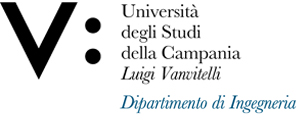Giovanni LEONE
Insegnamento di WIRELESS LINKS FOR 5G AND IoT
Corso di laurea magistrale in INGEGNERIA ELETTRONICA
SSD: ING-INF/02
CFU: 9,00
ORE PER UNITÀ DIDATTICA: 72,00
Periodo di Erogazione: Primo Semestre
Italiano
| Lingua di insegnamento | ITALIANO |
| Contenuti | L’obiettivo principale è affrontare con rigore matematico la trattazione dei meccanismi che influenzano i collegamenti wireless, sia per quanto riguarda la propagazione del segnale elettromagnetico che i componenti passivi (antenne) necessari per la sua trasmissione e ricezione, tenendo conto delle più attuali applicazioni nei sistemi di telecomunicazioni cellulari di 5° generazione e nelle reti di Internet-Of-Things. Sono quindi trattate la radiazione, la propagazione e la ricezione del campo elettromagnetico, sia “in spazio libero” che in scenari realistici, dove intervengono diversi ostacoli geometrici che modificano la radio-copertura. Inoltre, si considera l'analisi, le caratteristiche e le prestazioni di antenne di grandi dimensioni rispetto la langhezza d'onda di lavoro. |
| Testi di riferimento | A. McNamara, Pistorius, Malherbe, "Introduction to the Uniform Geometrical Theory of Dffraction", Artech House |
| Obiettivi formativi | Al termine del corso, lo studente deve essere in grado : |
| Prerequisiti | Fondamenti teorici dell’elettromagnetismo applicato forniti dall'insegnamento di Campi Elettromagnetici LM |
| Metodologie didattiche | Lezioni frontali |
| Metodi di valutazione | Prova orale. |
| Altre informazioni | Per ulteriori informazioni contattare il docente. |
| Programma del corso | • Irradiazione di sorgenti. Parametri delle antenne in trasmissione. Campionamento del campo in zona lontana (1CFU) |
English
| Teaching language | Italian |
| Contents | The main gola is to address the phenomena affecting wireless links by a mathematical point of view, as far as both the propagation of the electromagnetic signal and the passive components (antennas) necessary for its transmission and reception are concerned, by taking into account their applications to the 5th generation cellular telecommunications systems and the Internet-Of-Things networks. The radiation, propagation and reception of the electromagnetic field are then dealt with, both "in free space" and in realistic scenarios, where different obstacles can modify the radio coverage. Furthermore, we analyze the radiation performance of antennas large compared to the working wavelength. |
| Textbook and course materials | A. McNamara, Pistorius, Malherbe, "Introduction to the Uniform Geometrical Theory of Dffraction", Artech House |
| Course objectives | At the end of the course, the student will be able: |
| Prerequisites | Theoretical foundations of applied electromagnetism provided by the LM Electromagnetic Fields teaching |
| Teaching methods | Classroom lessons |
| Evaluation methods | Oral examination. |
| Other information | For any further information, please contact the professor. |
| Course Syllabus | • Radiation from a source. Antenna parameter in trasmission. Far field sampling (1CFU) |








